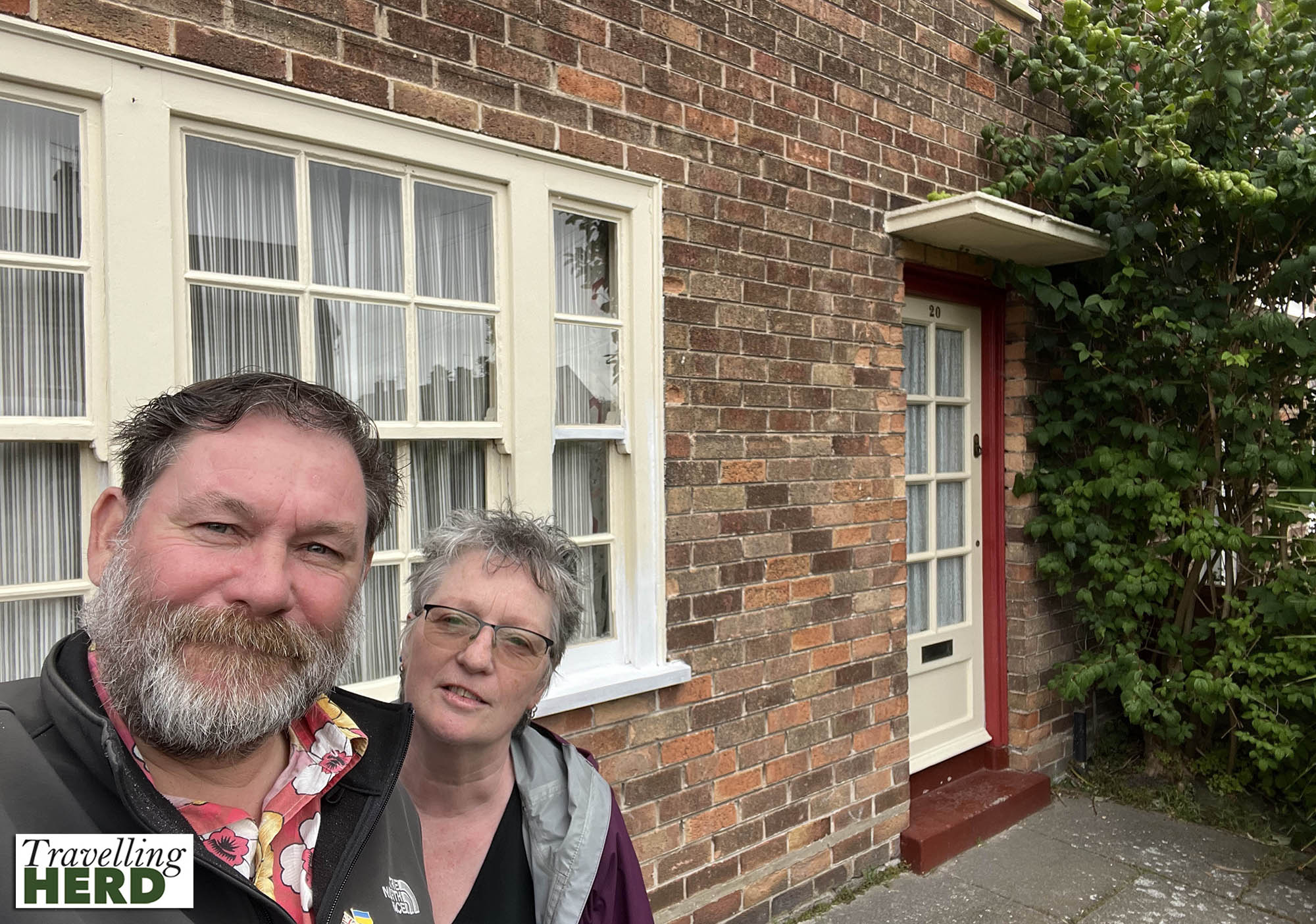Read this blog: The one where we visit two of The Beatles’ childhood homes.
Wednesday 23rd August 2023
The childhood homes of John Lennon and Paul McCartney are both now owned and managed by the National Trust. You have to book a tour in advance to visit them and choose a pick up point: those who are driving are advised to go to Speke Hall, another National Trust property where there is plenty of parking space and those who come by train can be picked up from Liverpool South Parkway Station. Tour groups are limited to 15 taking into account the size of the houses and the capacity of the minibus itself.
We drove to Speke Hall and waited for the dedicated minibus which rather satisfyingly includes the slogan, ‘Visit The Beatles’ Childhood Homes’ on the side [see feature photo]. Several groups were waiting including two women who, it transpired, had missed their booking and were hoping to join another tour. We could tell from the body language as they spoke to him that the driver was not very optimistic.
As Matilda is a life member of the National Trust entry was free for both of us but there is a charge of £11.00 per person to cover the cost of the minibus. Non-members must also pay a £21.00 entry fee, so Matilda was able to add £42 to her running total of ‘savings’ against her membership.
The first stop was Mendips, John Lennon’s childhood home. Our driver was very knowledgeable and pointed out various places of interest on the way. There is bus stop on the other side of the road just opposite Mendips. John’s mother had been to visit and was crossing the road to catch a bus when she was tragically run over and killed. The driver was an off-duty policeman. We were told that he later left the Force and became a postman and his round included delivering the fan mail to Paul McCartney’s house.
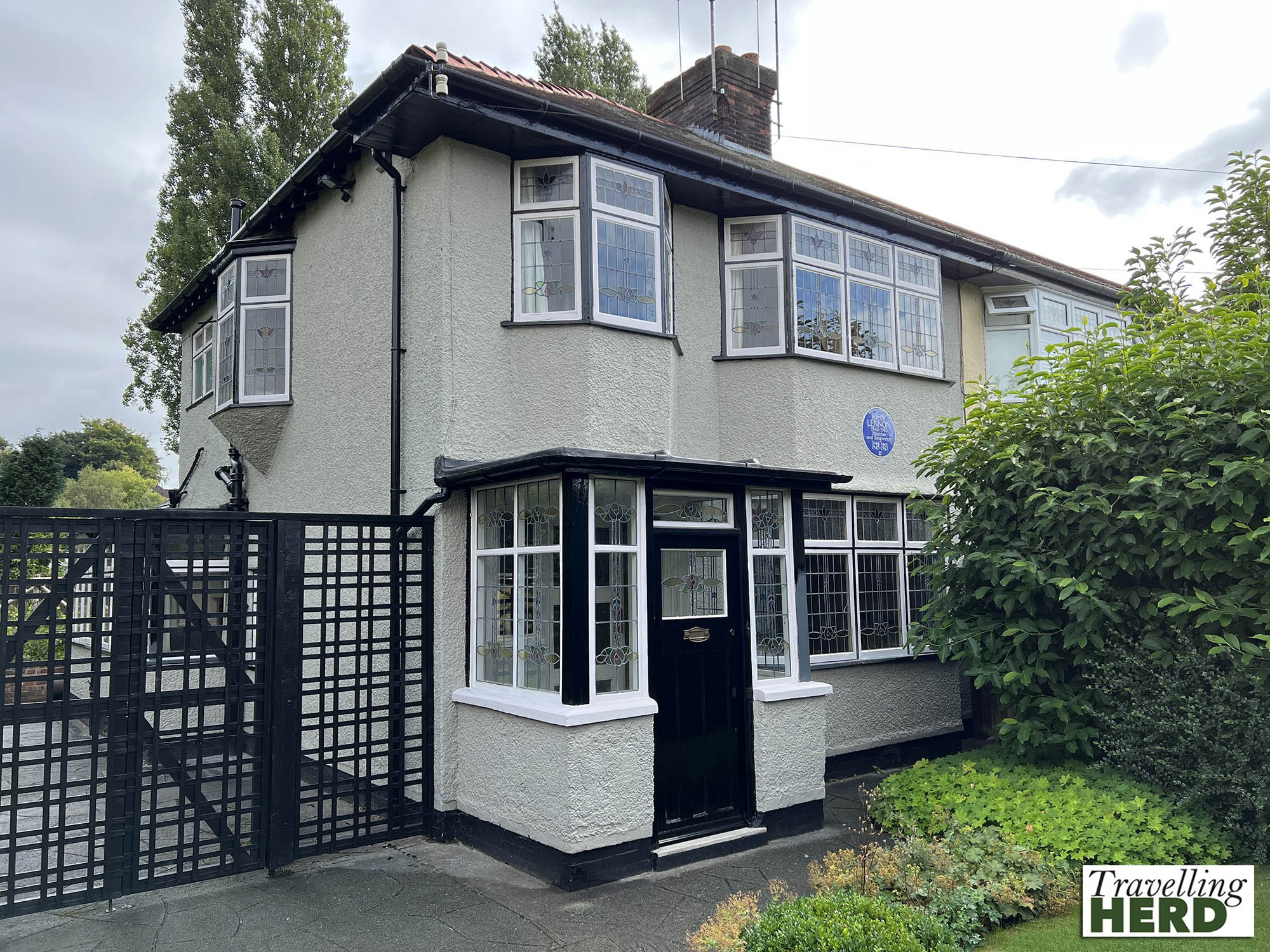
We were met in the front garden at Mendips by our guide who had worked as The Beatles Correspondent on the Liverpool Echo and was even more knowledgeable than our driver.
John Lennon lived at Mendips with his aunt Mimi and uncle George even before the death of his mother. Mimi provided the discipline while George was more nurturing, sitting John on his knee and teaching him to read by sounding out words in the Liverpool Echo. Later in life, news headlines often provided the inspiration for Beatles’ songs.
Yoko Ono bought the house in 2002 and gifted it to the National Trust to prevent it being turned into a tea room. She has also provided many of the mementoes and items on display.
No photos are allowed inside the houses and we respected this rule although we suspect not all the visitors were adhering to it. Apparently Aunt Mimi did not appreciate the noise of Paul and John practising the guitar and writing songs so when she was in she would banish them to the porch [below] where their creativity continued to flourish.
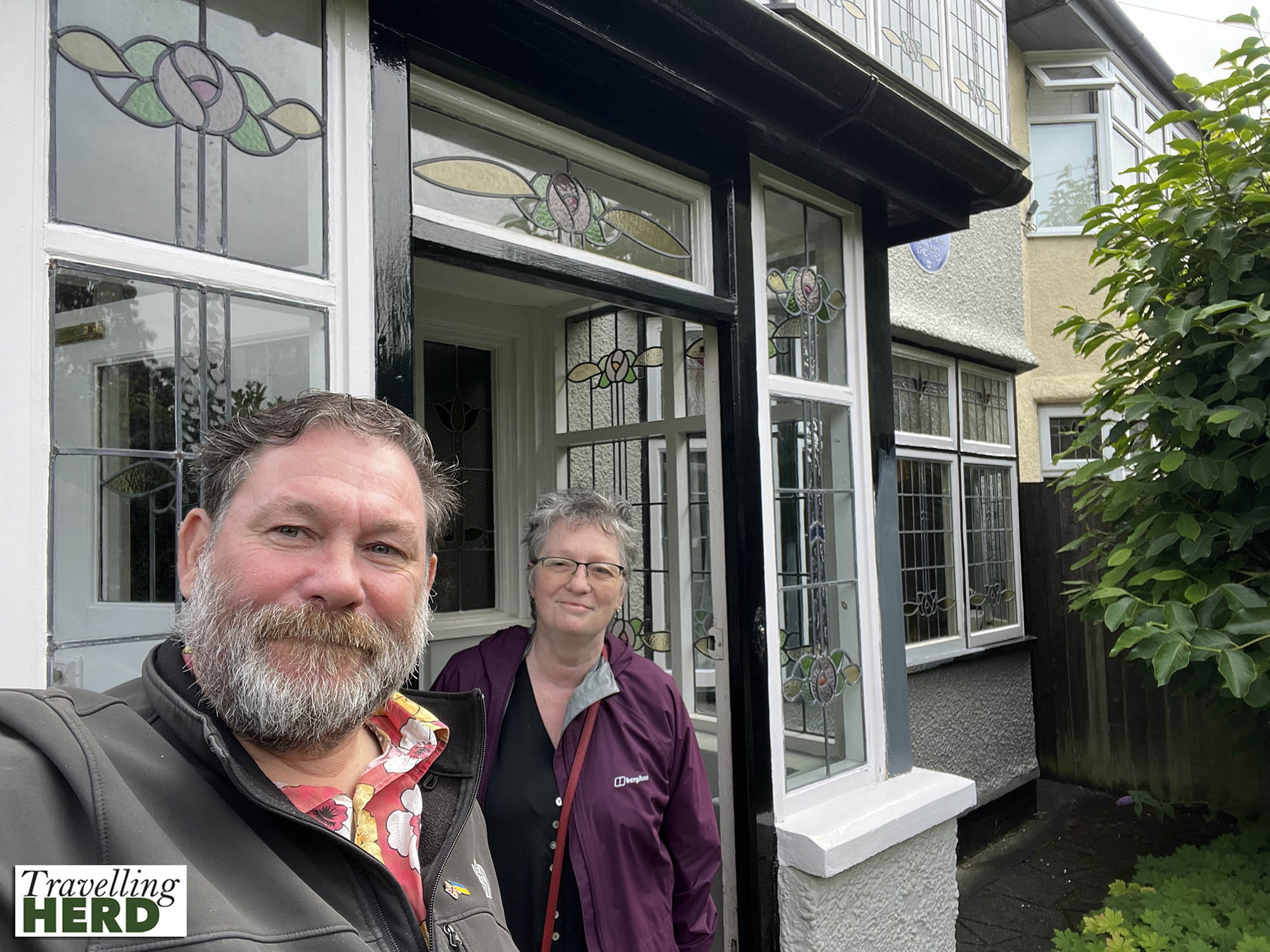
From here it was a short walk to 20 Forthlin Road, the McCartney’s home and John and Paul would often go there to practice their music in a more receptive and supportive atmosphere – Paul’s father and brother were also musicians. We made the journey by minibus.
The front is a very unassuming terrace in what would have been a council housing estate [see Selfie of the Day]. We were first taken round to the back of the house. Paul’s brother Mike McCartney [a photographer and member of the group The Scaffold] has been instrumental in re-creating the house as it was when they lived there. There are also prints of many of the photographs he took at this formative stage in the lives of The Beatles. One photo, taken a little later, shows Paul re-creating the climb up the drainpipe [seen below] which was his sneaky way back in when he came home late.
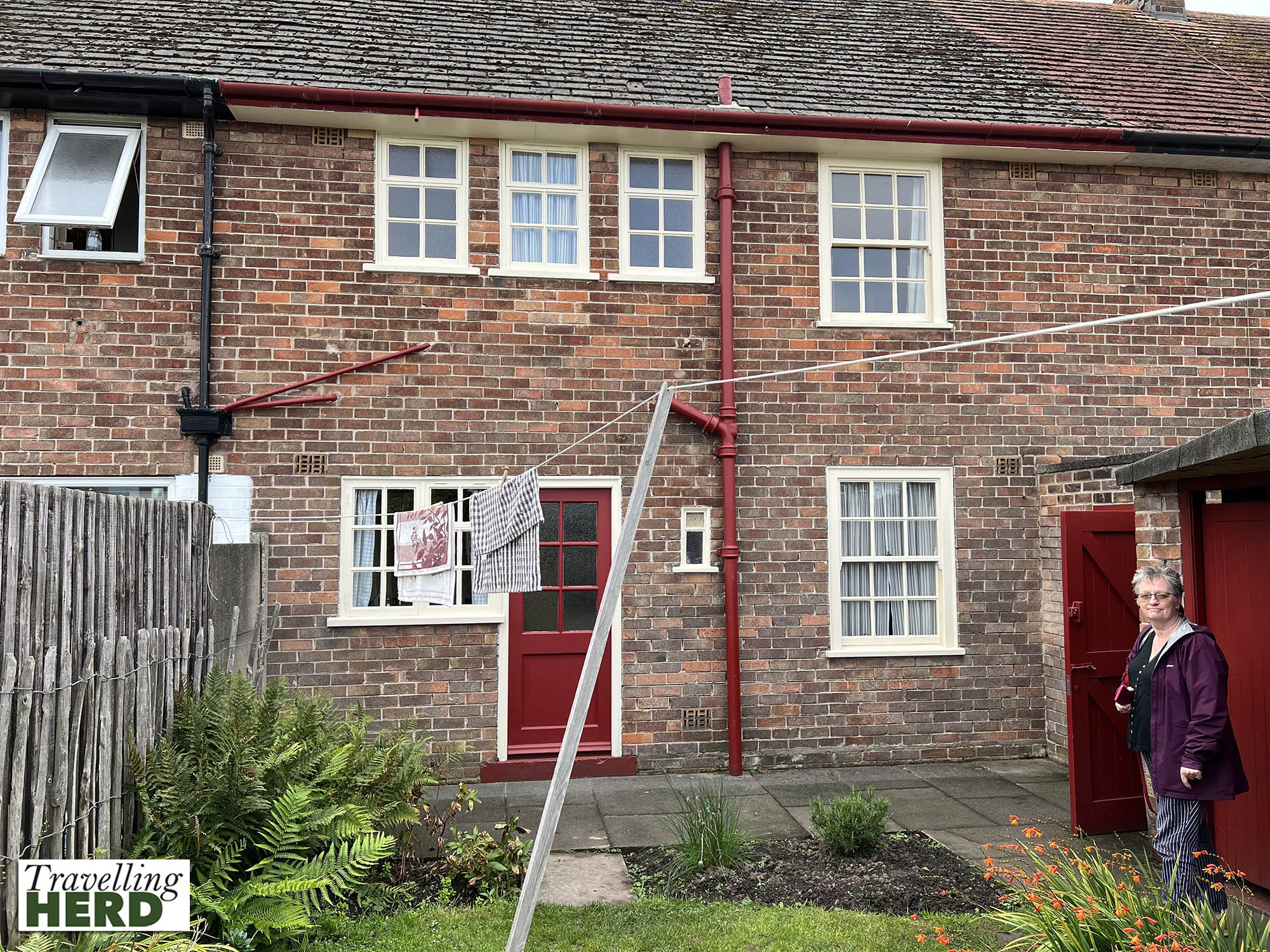
Although photography is not allowed inside, our guide allowed us to take photos from the inside out. It must have been very disconcerting for the families to have hordes of fans waiting outside their homes at the height of Beatlemania. In 1964, Paul bought his father another house to escape them. Aunt Mimi started by inviting fans in and offering them a cup of tea but had to stop and began locking the back door when they started stealing the crockery.
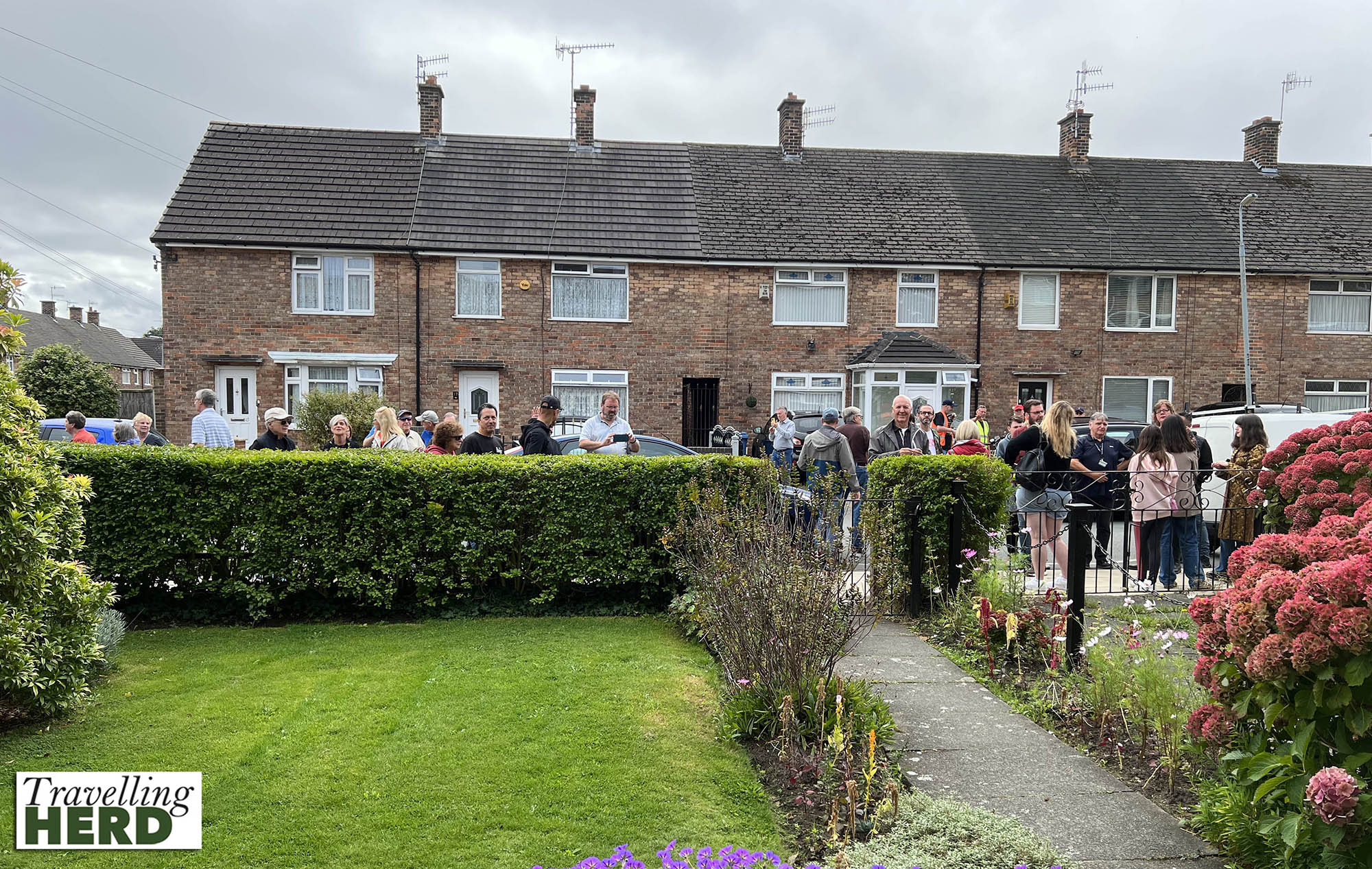
We felt privileged to be within these hallowed walls where songs such as Love Me Do and I Saw Her Standing There were written, whilst others could only stand outside, trying to look in.
It was like a childhood visit to see a grandmother or an aging aunt: two ordinary homes as they were in the early 60s. Matilda’s grandmother had the same green tea service as Aunt Mimi. John Lennon obviously had the more affluent upbringing although the McCartneys had a telephone before this was at all usual because his mother, Mary McCartney worked as a midwife. Sadly, she died less than a year after they moved to this house.
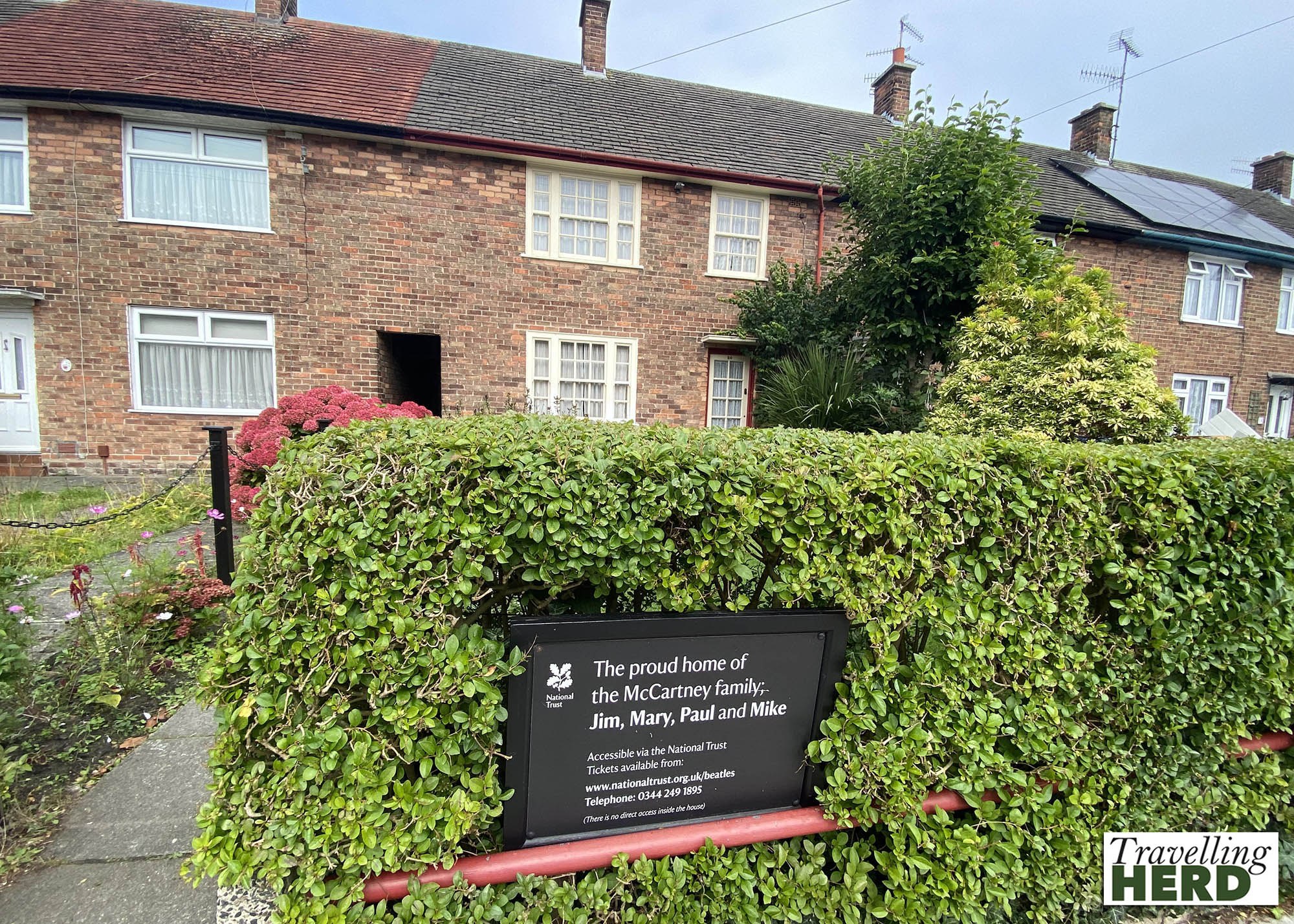
After touring these two small family homes, the minibus took us back to Speke Hall where the couple who had missed their tour were still waiting hopefully.
Speke Hall is one of the finest surviving timber-framed wattle and daub Tudor houses and provided quite a contrast..
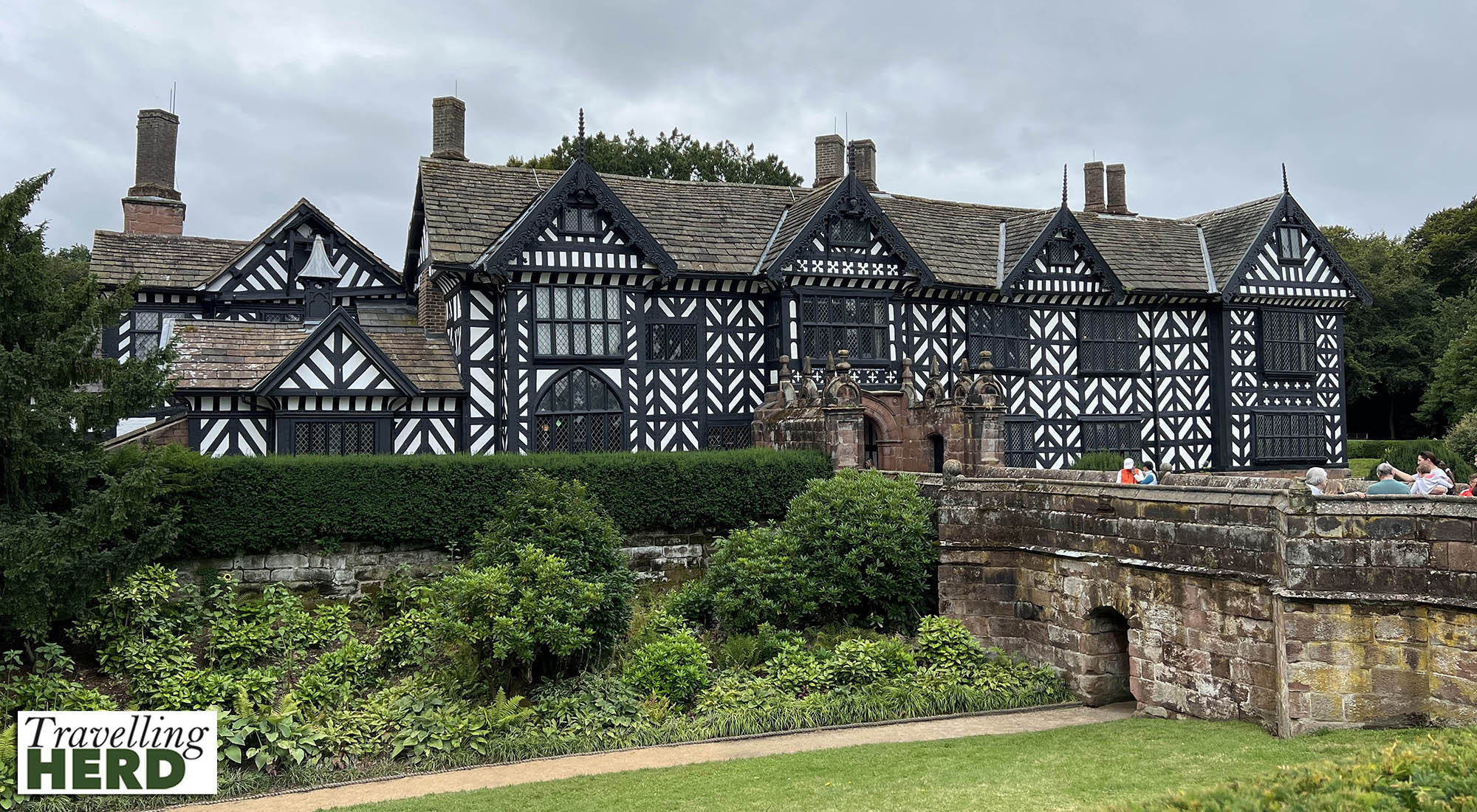
Built between 1530 and 1598, the family who owned the house were loyal catholics and there is a priest hole, with an observation hole built into a chimney so that people approaching the house could be seen and the priest could be warned.
The house includes fine wooden panelling, gothic revival furniture and William Morris wallpaper.
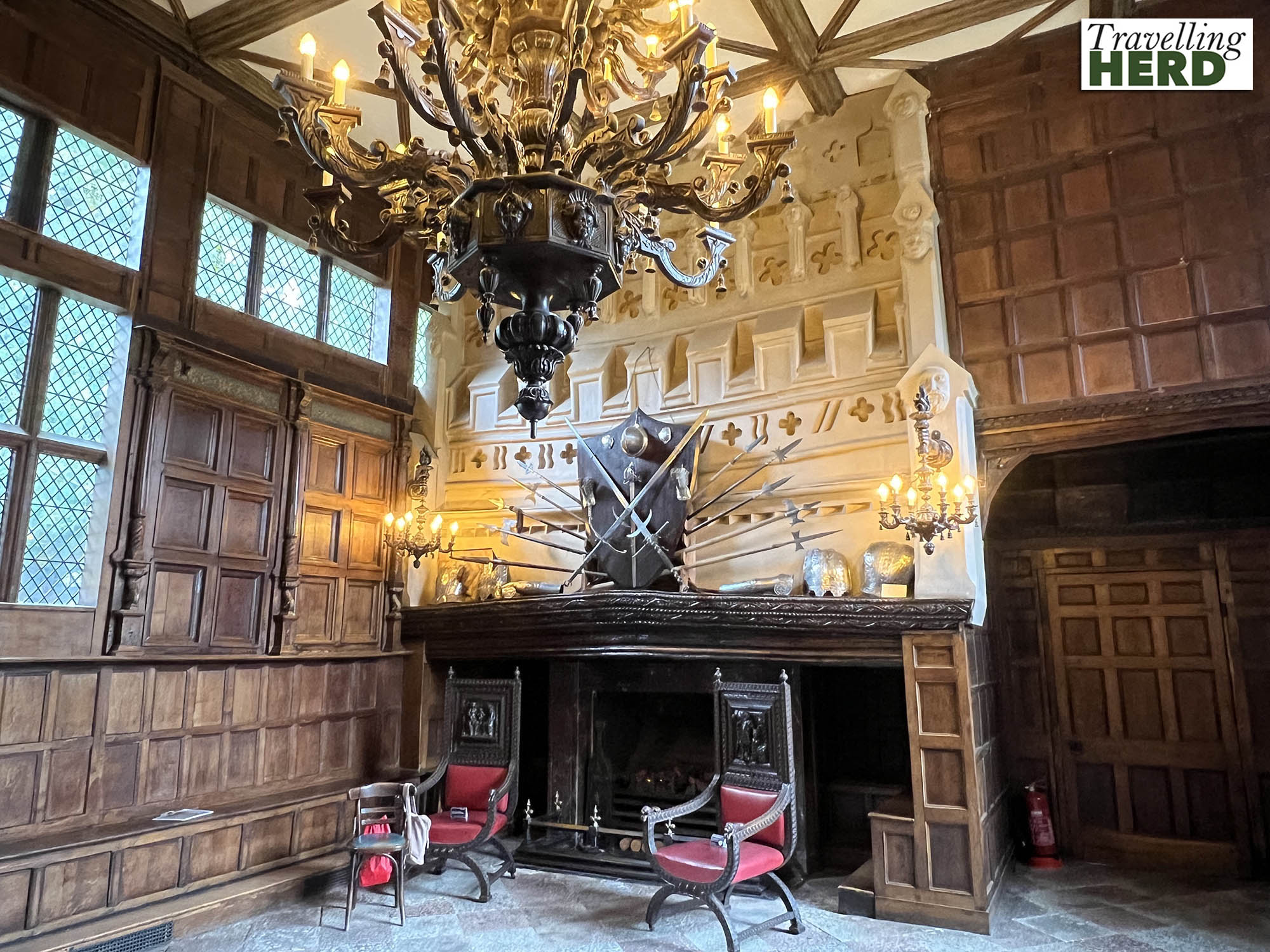
Speke Hall opened at 12:30 and we were some of the first visitors of the day. The volunteers in the rooms were clearly very knowledgeable and keen to share. However, we must have been a disappointment to them as we walked swiftly round and failed to engage them in conversation.
We could have learnt so much more but we still had to drive the 250 miles home and wanted to get on our way.
Selfie of the day:
